Sea-Doo Switch Review
Sea-Doo has entered the pontoon boat game with their very new and still hard to get Sea-Doo Switch models.
What Is it: The Sea-Doo Switch is as close to a game changer in the world of pontoon boats as you’re likely to have seen in the last 20 years thanks to the fact it operates via a jet engine. While many pontoon manufacturers have upped the ante in recent years with an added tube for extra buoyancy to make a tritoon, and a lot of luxury amenities and/or increased engine power to make pontoons better suited as luxury cruisers or sports boats, Sea-Doo essentially designed a new kind of vessel entirely.
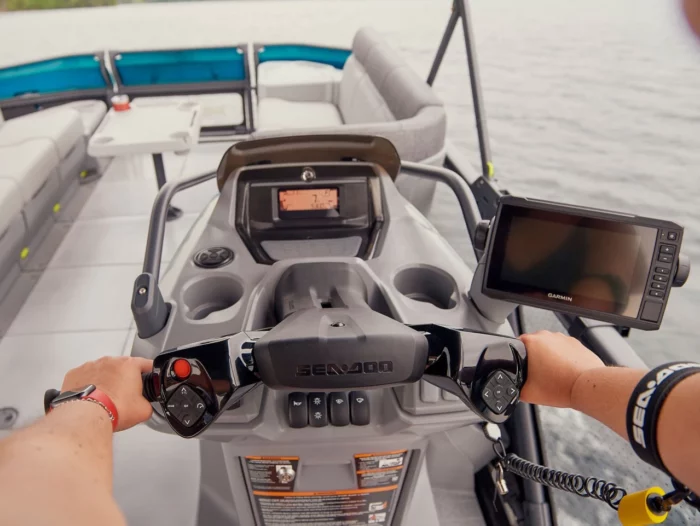
Sea-Doo, as you know, is known for personal watercraft. They used that design expertise to make the Switch, a hybrid craft that comes in three different models – the Switch, the Switch Cruise and the Switch Sport. Each of the three models is targeted towards different pontoon users and what they might hope to get out of their pontoon experience.
The basic Switch model is a general use sort of boat that would appeal to anyone just looking to get out on the water. It would certainly be usable as a fishing boat, a cruising vessel, or for some leisurely days with the family on the water.
The Switch Cruiser is more designed to compete with the modern crop of higher end pontoons that offer some more luxury and comfort to boaters. The extra features and modular system make this ideal for those who like boating for the sake of boating and want to be comfortable on the water, but of course it works for things like fishing as well.
The Sport model is more geared towards those who want some faster pace fun on the water whether that be tubing, skiing, swimming or just getting the most out of the engine for some fun. The deck is outfitted for fun in the sun and that seems to be how it’s marketed.
There are three tubes made of poly and fiberglass in the Switch. The other two are filled with buoyant foam while the central tube is 7 inches deeper and holds your fuel tank and the Sea-Doo Switch engines.
Using a jet engine, obviously best known as being the power behind PWCs and jet boats, alters the dynamic of pontoon boating considerably in terms of how these boats are designed and also in terms of price and value, which is really shaken up by all three models Sea-Doo has put on the market. Let’s do a run down of what the Switch has to offer.
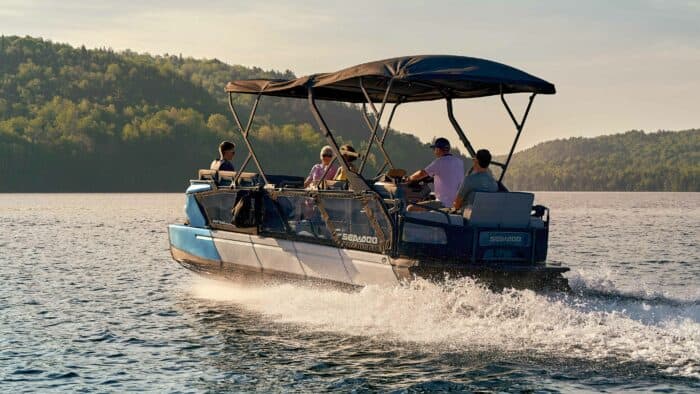
Key Features
The Switch models come with a variety of features and amenities to draw you in and give you some bang for your buck. Here are some of the standouts:
- RF D.E.S.S key (digitally encoded security system) offers quick starts and includes anti-theft features and can even digitally limit the boat’s speed
- Sea-Doo’s intelligent braking and reverse system introduced to their PWCs back in 2008 that offers a neutral, stopping and reverse function that’s fairly easy to use and manages well.
- Modular deck with quick-attach tiles
- iBR Intelligent brakes and reverse
- Sport. ECO and cruise control feature driving modes
- Retractable ladder
- Ski tow eye
- Dual USB ports
- 12V outlet
- Integrated anchor locker
- Adjustable table
- LED nav lights
- Polytec hull which means a tri-hull platform with three polypropylene and fiberglass tubes
- Debris-free pump system
- 1-year warranty on engine and materials, 10-year on hull and structure
In addition, the Switch Cruiser features:
- Bimini top
- Camper top
- Stern lounge
- Corner tables
- Garmin touchscreen GPS
- Driver seat with bolster
- Swim platform
- Wind deflector
- LED courtesy light
The Switch Sport offers these features in addition to the base Switch model
- Bimini top
- Stern lounge
- Sun pads and sport lounge
- Sun pad backrest
- Driver seat with bolster
- Rearview mirror
- Garmin touchscreen GPS
- Quick attach inflatable holder
- Console storage net
Sea-Doo Switch Pontoon Boat Specs
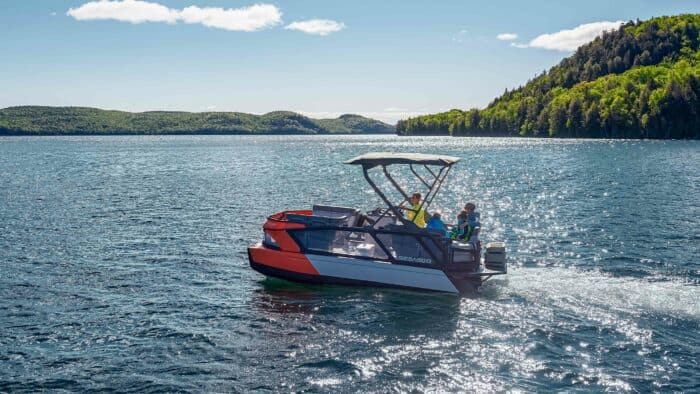
There are three models of the Sea-Doo Switch available and each has some slightly different specs to focus on.
Switch: Available in 3 configurations
- 13/16/19 feet in length for 5/7/9 passengers
- Rotax 1630 ACE 130/170 ECT engine offering 130 hp or 170 hp depending on size
- Top speed of 32 mph
- 29 gallon fuel tank
- 105.9/116.5/173.2 gallon storage
- 1677 lb/1964 lb/2263 lb dry weight
- 93.5” beam
- 12.8’/15.9’/18.9’ length
- Trailer included
- Caribbean Blue paint
Sea-Doo Switch Cruise: Available in 5 configurations
- 18/21 feet in length for 7/9 passengers
- Rotax 1630 ACE 170/230 ECT engine offering 170 hp or 230 hp depending on size
- Top speed of 30.5 mph/34.4 mph/37.4 mph/43.8 mph/ 46.2 mph depending on configuration
- 29 gallon fuel tank
- 187.3/208.5/219.1/240.3 gallon storage
- 2206 lb/ 2226 lb/ 2255 lb/ 2464 lb/ 2548 lb dry weight
- 93.5” beam
- 17.4’ length/20.4’ length
- Caribbean Blue/Neon Yellow/Coral Blast paint
Sea-Doo Switch Sport: Available in 3 configurations
- 13/18/21 feet for 5/7/9 passengers
- Rotax 1630 ACE 170/230 ECT engine offering 170 hp or 230 hp depending on size
- Top speed of 43.5 mph/46.2 mph/43.8 mph
- 29 gallon fuel tank
- 141.3/151.9/162.5 gallon storage
- 1783 lb/ 2193 lb/2426lb dry weight
- 93.5” beam
- 12.8’/ 17.4’/20.4’ length
- Caribbean Blue/Neon Yellow/Coral Blast paint
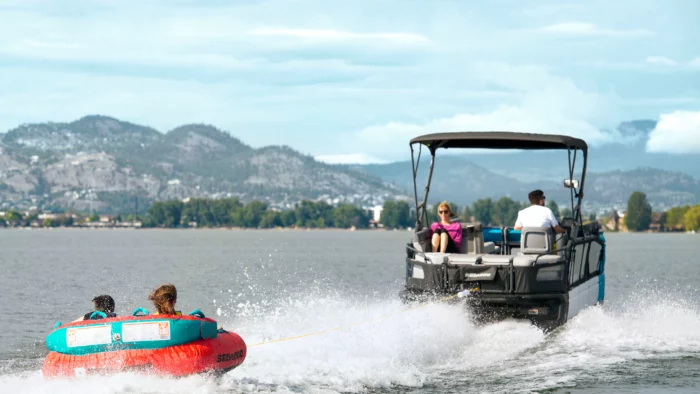
Pros
- Jet engine offers a unique and fun new pontoon experience that includes a much more shallow draft of around 20 inches and potentially increased safety for anyone swimming around the boat.
- Great price compared to many similarly sized and outfitted models. Head to head against similar pontoons you can expect to pay as much as $10,000 less for a Sea-Doo Switch, depending on how you customize it.
- Clear vinyl sides offer greater safety and visibility compared to traditional aluminum
- Modular deck allows you to strip any furniture or storage away, or add some in as you see fit. It’s pretty easy to use and greatly increases the boat’s versatility. For instance, if you’re using a sport model and want to actually face the action you can easily switch chairs around to watch those skiing or being towed behind. This level of customization allows you to make a much more “luxury” boat if you want, but it does increase the price.
- Once you get a feel for the steering, it’s hard not to have fun with it. Because it handles like a personal watercraft you’ll be able to make turns and cut through the water with a lot more precision than you ever could on a traditional pontoon. It can get a little hairy at high speeds but for some people that’s part of the fun.
- The trailer that’s included in the price really bumps up the overall value, especially if you factor in what buying a trailer can typically cost for a similarly sized pontoon boat. You’re saving a good chunk of money there.
Cons
- No side gate which makes boarding oddly precarious. Gates are located on the bow and stern but if you’re not sure footed or are loading gear these can become something of a hassle to navigate
- Unusual steering controls may take some getting used to, especially if you don’t have much experience operating a personal watercraft.
- Seating is not as plush as it could be in terms of comfort and cushioning
- Speed will not break any records and seems to underperform slightly compared to the listed specs
- Jet propulsion is going to be louder than a typical outboard on a traditional pontoon boat
- Depending on when you read this, getting your hands on a Switch may be nearly impossible. They are often sold out everywhere across North America and when local boat dealers get them in they are usually in very limited supply.
What You Need to Know About the Sea-Doo Switch Boat

So it’s a Sea-Doo PWC and a pontoon together. The design is definitely made with an eye towards versatility and performance. Consider those vinyl sides. You can see through them and they’re lightweight, which makes them superior to traditional aluminum, in my opinion. The modular tile system means you can add chairs, benches and table sif you want or if you plan a fishing day and that’s all in the way, you can remove it all quickly.
The base Switch model starts as low as $27,899. Your basic Cruise model bumps up to $39,799 and the base Sport is $34,899. The most expensive model you can put together on Sea-Doo’s site is the 21 foot 230 hp Cruise that starts at $52,399. Compared to similarly sized pontoons from other manufacturers, these are really coming in on the low end for the features you get included.
The Switch uses handlebar steering like a PWC rather than a traditional boat. If you have never operated a PWC, this is going to take some getting used to. Throttle on the right handle, and Sea-Doo’s intelligent brake/reverse on the left. It can feel very ungainly at first, even if you are used to a jet ski because while the handling is very similar, it’s clearly not the same. This is a lot bigger than a traditional PWC, so there’s a learning curve to get used to controlling it. That said, if you are familiar with PWC control you’ll probably warm to the Switch faster than someone with no experience.
In terms of power, you can see what the engines offer and their advertised top speed. You need to keep in mind that those numbers are 100% gleaned under ideal conditions. In a test run with the 230 hp we didn’t see that 43 mph that’s advertised, even with a boat that wasn’t fully loaded with passengers. The weather was working against the boat, however, and that’s something that’s always been an issue for pontoons. If you try to run a pontoon in the wind, the wind is going to win. If you were hoping the jet engine would change that, it’s not the case. In calmer conditions, the boat performed considerably better. A 21-foot boat with a 230 hp engine and a bimini top catching the wind can still move 6 people on board at a brisk 40 mph.
If you’re worried about noise, you have a mixed bag here. Jet engines are normally known for their subtlety and this isn’t different. That said, it’s quieter than an inboard when in operation, but louder than your typical 4-stroke outboard.
Handling is very smooth and the ride is very similar to what you might expect from a traditional pontoon. The cruise control option keeps you going when you don’t want to keep on the throttle and the jet engine holds its own compared to traditional outboards.
Pontoons typically have a relatively shallow draft, but the jet engine makes it even more impressive. You’ll be able to navigate some very shallow waters here.
What People Are Saying

Obviously the Switch caused a bit of a stir when it first hit the market before anyone was able to try one for themselves. Reactions seemed mixed between “this is awesome!” and “I don’t know if I trust this.” Now that they have been on the water for a while and a number of people, including dealers, journalists and casual boaters have had a chance to try them, reactions have been mixed.
Some quotes from those who have tested them out include:
“The Switch Cruise is fun, it’s capable, and it has a sleek, modern styling that stands out from the crowd. Young families looking for a pontoon with a performance edge will find a lot to like about the Switch Cruise.”
“…the ride is not as good as a much larger pontoon, and the speed is far from mind-blowing (mid-30s with 6 adults).”
“The Switch creates even more appeal by bringing a fun, fast, flexible and affordable boat to the mix. For new boaters looking to maximize their budget and optimize their storage space, it’s kind of a no-brainer.”
One thing to keep your eye on here is that these boats are so new, and so untested, that we don’t have a lot of insight into how they’re going to hold up and perform over the long term. Some people are nervous about Sea-Doo’s track record when it comes to performance and longevity and whether that will transfer over to the Switch models. For now, there don’t seem to be any complaints, or not a lot anyway, about overall performance beyond concerns about engine power falling a little short of the mark when you’re trying to hit speed.
Do We Recommend It?
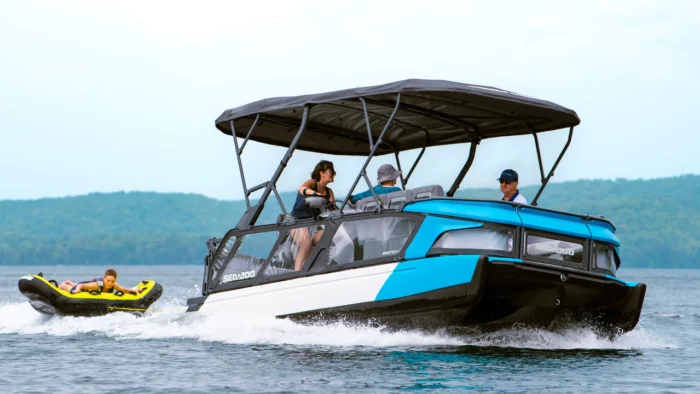
The strength of pontoon boats in general is their versatility. Do you want a fishing boat? A cruising boat? A party boat? A boat for tubing or water skiing? Pontoons can check all of those boxes and the Switch can as well if you customize it the way you want. These boats are definitely designed for maximizing fun and usability with family and casual boaters in mind. They won’t be breaking any speed records so they’re not “the best” sport boats out there. And for all the versatility of the modular system, they’re never going to be as well-appointed as the highest end luxury pontoons either. But that’s probably not the point, either.
If you want a fun pontoon boat that can do a variety of things, is easy to control and offers a smooth and pretty reliable ride at a price that leaves the competitors in its wake, then the Switch is just a boat you can’t overlook.
For now, based on what I’ve seen, this is a fun boat at a great price and it’s definitely recommended.
Categories: Pontoon Boats
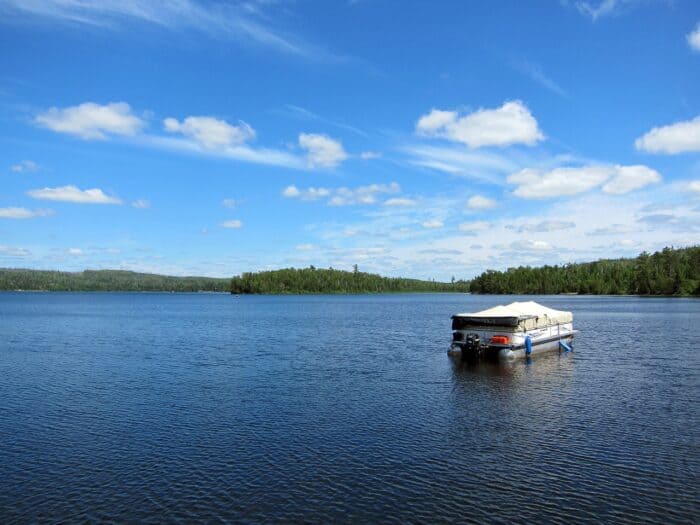
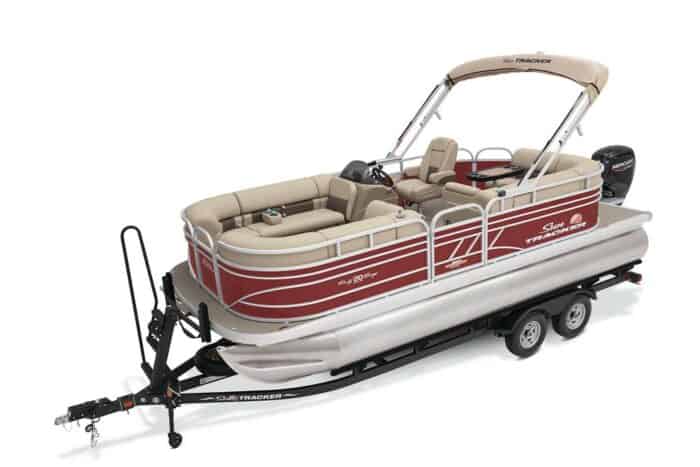

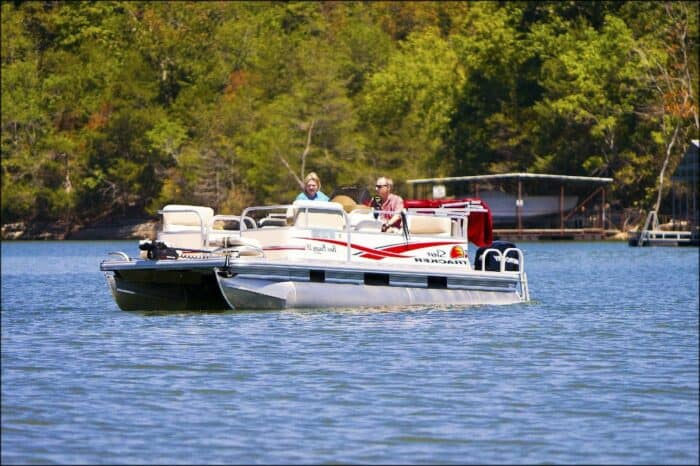








2 Comments
Bob LeBlanc on January 9, 2023
Jet skis can overturn. Are there any safety issues reported regarding the switch flipping over?
Scott on May 20, 2023
Jet skis overturn be ause of their hull shape, not because of their propulsion system.